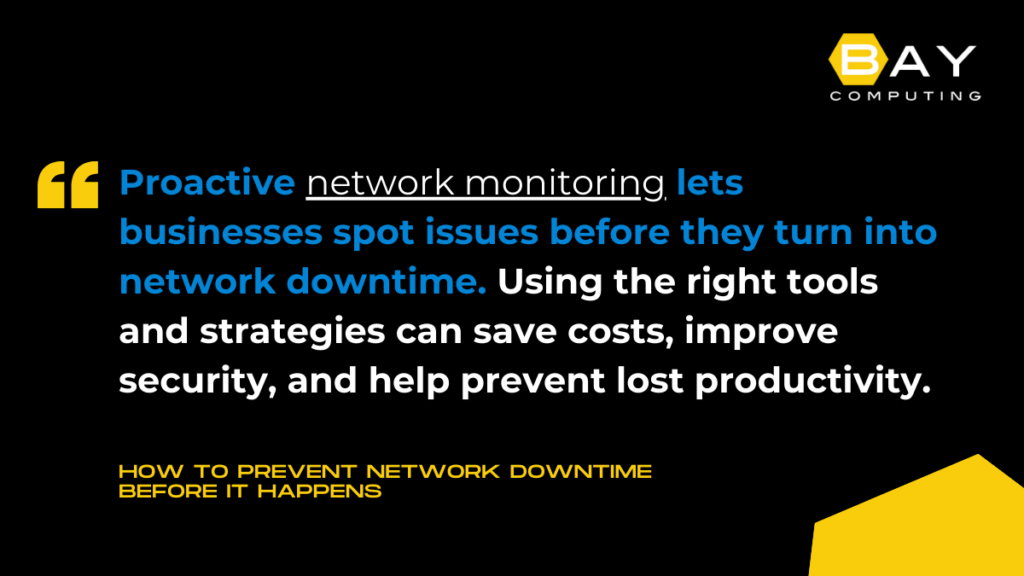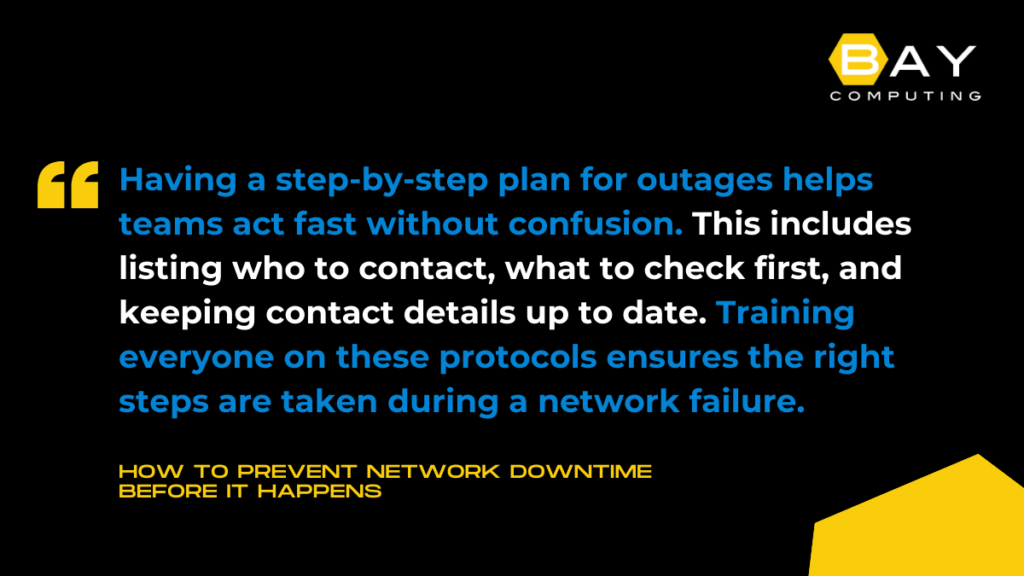How to Prevent Network Downtime Before It Happens
Network downtime can cause lost productivity, missed opportunities, and higher costs for any business. Even a short outage can disrupt daily operations and frustrate employees and customers. To prevent network downtime before it happens, organizations need proper planning, regular system updates, and monitoring tools that quickly detect problems.
Simple steps like keeping firewalls updated, patching systems, and knowing possible weak spots are essential for strong network performance. Proactive measures such as disaster recovery planning and network alarm monitoring can help stop problems before they take down the entire system. Readers can find more strategies in this guide for avoiding network outages and keeping systems stable.
Proactive Network Monitoring

Proactive network monitoring lets businesses spot issues before they turn into network downtime. Using the right tools and strategies can save costs, improve security, and help prevent lost productivity.
Implementing Real-Time Network Monitoring Tools
Real-time network monitoring tools watch the network 24/7. These tools display live data about network speed, device status, and traffic patterns. Companies can detect slowdowns or device failures as soon as they happen.
Dashboards help IT staff track key metrics quickly. Complex problems can be seen early, such as unusual traffic spikes or devices going offline. This approach gives a clear view of network health at any time.
Choosing the right tool is essential to cover all devices and traffic types. Tools with easy integration and reliable reporting give teams the best chance to prevent outages. Network visibility across locations also supports faster response times during an incident, as seen in best practices for proactive monitoring.
Setting Up Automated Alerts and Thresholds
Automated alerts warn IT staff right away if something is wrong. Setting up alerts and thresholds means that unusual activity triggers a notification by email, text, or inside the monitoring dashboard.
Thresholds can include network usage crossing a certain percent, device temperatures rising, or error rates getting too high. Well-designed alerts help teams act fast and fix issues before users notice any problems.
A good alert system reduces false alarms by making sure thresholds match normal activity patterns. Teams should adjust alert settings as the network changes. Using automated alerts lets IT teams catch trouble early, limiting the risk of downtime.
Analyzing Performance Data for Early Warning Signs

Regularly reviewing historic network data can show warning signs before they become outages. Teams look for trends like slow response times, rising error logs, or shrinking bandwidth.
Spotting small problems early often means repairs are quick and easy. IT staff use charts, logs, and reports to find patterns. This helps with long-term planning, like upgrading hardware or balancing network loads.
Performance analysis supports better decision-making and keeps the network healthy over time. By examining these details, businesses can address problems before they affect customers or daily work, which is key to preventing costly downtime.
Network Infrastructure Risk Management
Effective risk management for network infrastructure means dealing with physical devices, software settings, and backup connections. Regular checks, setting up system backups, and making clear rules for outages help prevent unwanted downtime and protect against costly errors.
Conducting Regular Maintenance and Updates
Network equipment, like switches and routers, can break down without warning. Preventative maintenance includes cleaning devices, checking cable connections, and testing for hardware errors. It is important to have a schedule for firmware and software updates so systems stay secure and bug-free.
Outdated equipment can also cause security risks and slow performance. Organizations should document what equipment they have, when it was last serviced, and which parts need attention first. Regularly reviewing network vulnerabilities allows IT teams to catch problems early before they lead to outages.
A simple checklist like the one below can help:
| Task | Frequency |
|---|---|
| Hardware inspection | Monthly |
| Firmware update | Quarterly |
| Cable checkup | Monthly |
| Security patch review | As released |
| Equipment cleaning | Monthly |
Developing and Testing Redundancy Solutions
Networks stay online if one system can take over when another fails. Redundancy solutions include extra backup devices, multiple internet connections, and failover switches. Using high-quality, reliable equipment can make it less likely systems will go down at all.
Testing backups and practicing failover steps helps teams know what to do when a problem comes up. Setting up redundant network connections is especially helpful for businesses that need to be online all the time. Backup power supplies, like uninterruptible power supplies (UPS), can stop power cuts from turning into outages.
A basic redundancy plan includes:
- Backup internet or data links
- Hot-swappable switches or routers
- Extra power supplies
- Offsite data backups
Establishing Incident Response Protocols

Having a step-by-step plan for outages helps teams act fast without confusion. This includes listing who to contact, what to check first, and keeping contact details up to date. Training everyone on these protocols ensures the right steps are taken during a network failure.
Incident response plans should be practiced with drills, so everyone knows their job. Teams should document every outage, how long it lasted, and what fixed the problem. This way, future issues can be solved faster.
Maintaining a record of possible network vulnerabilities helps staff focus their efforts when time is critical. A straightforward protocol avoids delays and keeps downtime to a minimum.Don’t Wait for Downtime to Disrupt Your Business
Don’t Wait for Downtime to Disrupt Your Business
Stay ahead of network issues with Bay Computing’s expert network management solutions. Our proactive monitoring, real-time alerts, and disaster recovery planning are designed to keep your business online and protected—before problems start.
Protect your productivity. Prevent costly outages. Get in touch with Bay Computing now and discover how we can safeguard your network—before downtime strikes.
.




